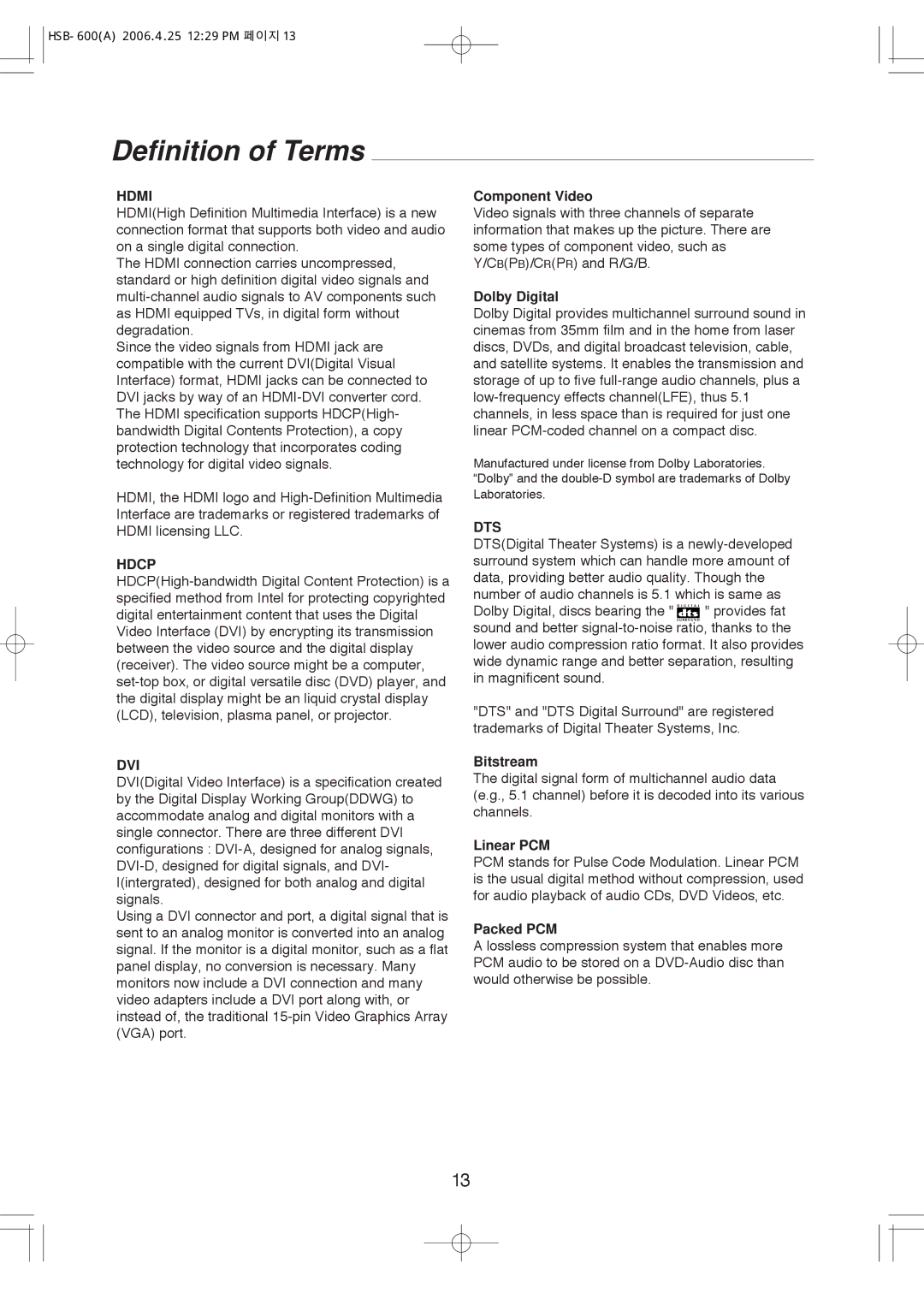

HSB-600(A) 2006.4.25 12:29 PM 페이지 13
Definition of Terms
HDMI
HDMI(High Definition Multimedia Interface) is a new connection format that supports both video and audio on a single digital connection.
The HDMI connection carries uncompressed, standard or high definition digital video signals and
Since the video signals from HDMI jack are compatible with the current DVI(Digital Visual Interface) format, HDMI jacks can be connected to DVI jacks by way of an
HDMI, the HDMI logo and
HDCP
DVI
DVI(Digital Video Interface) is a specification created by the Digital Display Working Group(DDWG) to accommodate analog and digital monitors with a single connector. There are three different DVI configurations :
Using a DVI connector and port, a digital signal that is sent to an analog monitor is converted into an analog signal. If the monitor is a digital monitor, such as a flat panel display, no conversion is necessary. Many monitors now include a DVI connection and many video adapters include a DVI port along with, or instead of, the traditional
Component Video
Video signals with three channels of separate information that makes up the picture. There are some types of component video, such as Y/CB(PB)/CR(PR) and R/G/B.
Dolby Digital
Dolby Digital provides multichannel surround sound in cinemas from 35mm film and in the home from laser discs, DVDs, and digital broadcast television, cable, and satellite systems. It enables the transmission and storage of up to five
Manufactured under license from Dolby Laboratories. “Dolby” and the
DTS
DTS(Digital Theater Systems) is a
Dolby Digital, discs bearing the " ![]()
![]()
![]()
![]()
![]()
![]()
![]() " provides fat sound and better
" provides fat sound and better
"DTS" and "DTS Digital Surround" are registered trademarks of Digital Theater Systems, Inc.
Bitstream
The digital signal form of multichannel audio data (e.g., 5.1 channel) before it is decoded into its various channels.
Linear PCM
PCM stands for Pulse Code Modulation. Linear PCM is the usual digital method without compression, used for audio playback of audio CDs, DVD Videos, etc.
Packed PCM
A lossless compression system that enables more PCM audio to be stored on a
13
